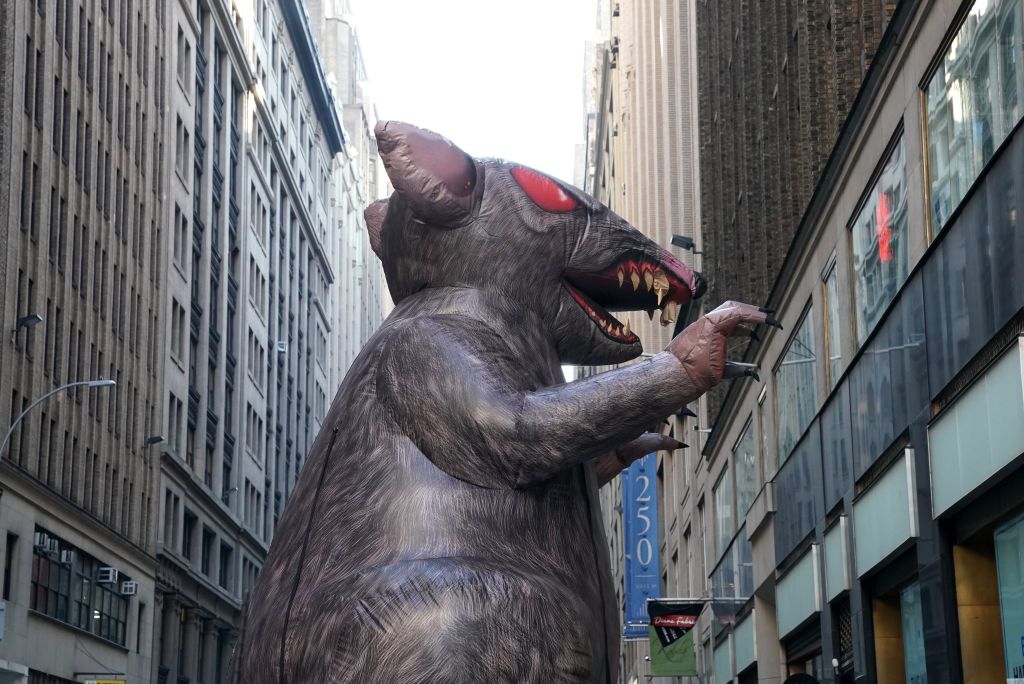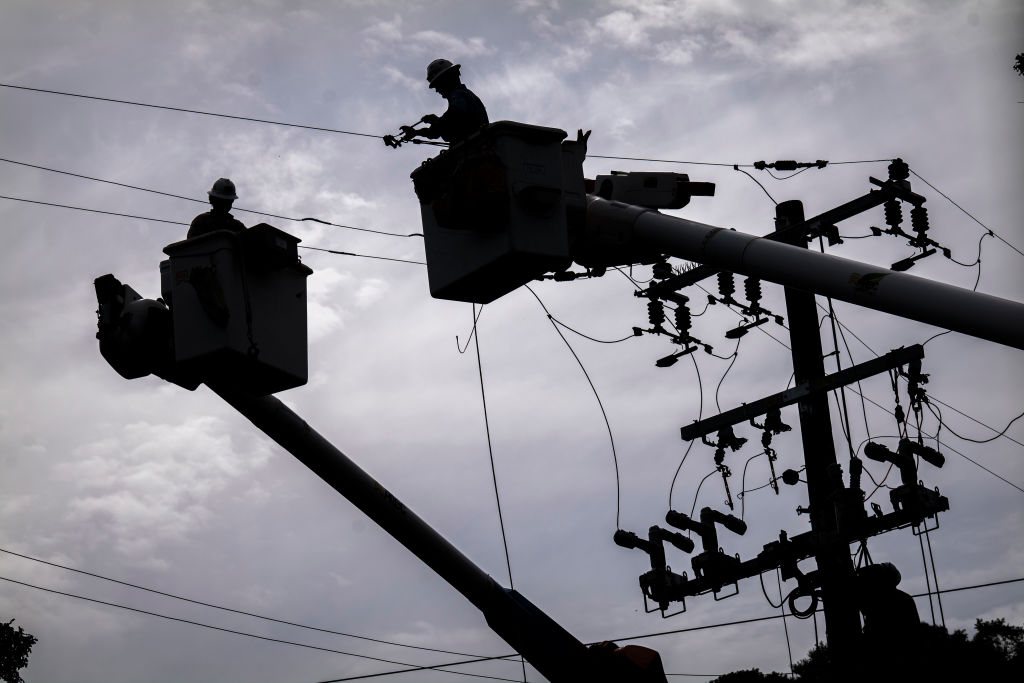
Cory Booker: A National Crisis and a Global Crisis
April 24, 2025
MAGA Media Is Having A BREAKDOWN Over Pete Hegseth
April 24, 2025Hong Kong Supermarket looked exactly as it always has. When I visited the store in Manhattan’s Chinatown last week, buckets of live crabs were stacked precariously next to bags of sweet-potato starch and shrink-wrapped boxes of dried shiitake mushrooms. The instant noodles took up two walls, where I quickly found my beloved and gloriously weird cheese-flavored kind. The aisles were packed with the usual staples: black vinegar, bags of vermicelli, sacks of jasmine rice big enough to body-slam a man.
But the product labels gave away that something was wrong: Product of China, many of them read in Mandarin. Almost everything at Hong Kong Supermarket is imported from China, and, because of tariffs, they could soon get more expensive. President Donald Trump’s 145 percent tax on goods imported from China affects everything from sofas to socks. Starting tomorrow, the fast-fashion giants Shein and Temu will hike their prices. And for some Americans, sticker shock from tariffs might mean skipping a new pair of jeans or squeezing a few more months out of a wheezing vacuum cleaner.
But the tariffs are especially tough on Chinese grocery stores and their customers. Unlike retailers that just happen to sell Chinese-made clothes and gadgets, stores like Hong Kong Supermarket are stocked with Chinese products because they are made in China. After all, I’ve yet to come across American brands that make my cheese-flavored noodles. Chinese grocery stores are a lifeline for millions of Americans like me. They’re where you can always count on basic ingredients that you’ll never find in Trader Joe’s or Whole Foods. In a world of tariffs, the Chinese grocery store has gone from a space of security to one of low, simmering dread: the kind that comes from watching the small constants of your life get a little more expensive, a little more distant.
At Hong Kong Supermarket, the prices haven’t gone up yet, but customers are bracing for hikes. There’s more pausing at price tags. More sighing. Aunties in quilted jackets crowd the produce bins, where their shopping carts tell the story of careful calculation: one bunch of scallions instead of two, a single pork bun where there might be three, the occasional wistful glance toward the $13.99 fresh durian in the cardboard barrel. In the dried-snacks aisle, the shopper beside me stared wistfully at a jar of salted plums. Anna Chen, a slight 50-year-old woman holding an empty green shopping basket, told me that tariffs were on her mind. “I really hope the prices don’t get higher,” she said.
They will, Wille Wang, a manager at Hong Kong Supermarket, told me. The store hasn’t had to increase prices much at the moment, he said, but it’s only a matter of time if the tariffs remain in effect. “What can we do? It’s not our fault; we can’t control tariffs. Unless we sell at a loss, which isn’t sustainable.” He expects cheap products might go up a little, but the big jumps will be on premium goods and hyper-specific varieties. I thought of fermented bean curds, a hot-pot favorite; black-yolked century eggs found in so many congees; and the sea cucumbers gifted to every grandparent. When existing inventory runs out, store owners will face hard choices: Eat the costs and risk going under. Raise prices and risk losing customers, as some businesses with Chinese suppliers are already doing. Seek alternative suppliers and risk altering the flavors that define their communities.
Everyone loses. Shoppers who frequent Chinese grocery stores may have few alternatives but to shell out more money for their food. You can’t swap out the Pixian bean paste for something generic from the “international” aisle for your mother’s mapo tofu and hope she won’t notice. You can’t trade out Shaoxing wine for dry sherry. Substitutions only go so far before the dish falls apart—one missing ingredient, and you’re eating a sad memory of something else. “Western grocery stores don’t have the groceries I need,” Chen said. “If prices keep going up, I can’t do anything about it.”
At some point, a work-around becomes a compromise, and a compromise becomes a resignation. These stores are where people can keep up how they’ve always eaten. Many people go to them not for novelty, but for continuity. “I’m thinking of stockpiling things like soy sauce and condiments,” said Fred Wan, a shopper whom I accosted near the fish department. He’s a 34-year-old who moved from Beijing to New York eight years ago; he and his wife recently moved closer to Chinatown partly to have better access to Chinese grocery stores. “I’m definitely worried.”
Chinese grocery stores are under pressure in more ways than one: Not only do they stock lots of products that are now subject to steep tariffs, they already tend to run on thin margins. “Small, independent grocery stores—especially those catering to ethnic communities—are particularly vulnerable,” David Ortega, a professor of food economics at Michigan State University, told me. If Trump’s full slate of tariffs goes into effect in a few months, the pain won’t stop at Chinese grocers. Vietnam is facing some of the steepest proposed tariff hikes. South Asian grocers might see seasonal delicacies like Alphonso mangoes get more expensive, if they can get them at all. (“Crying in H Mart” may soon take on a new meaning.)
If the costs of cultural foods keep rising, we’ll all feel it. More and more non-Chinese shoppers frequent these stores because they’re the only places that carry ingredients now in many kitchens—chili crisp, black vinegar, dumpling wrappers—or at least sell them cheaply. Food media, emphasizing that authenticity is a virtue, has popularized the idea that a visit to H Mart or the corner Chinese grocer will help you cook better. Big retailers have picked up brands popularized by smaller Chinese stores, such as Kikkoman, Lee Kum Kee, and the pantry favorite Lao Gan Ma chili crisp. The irony is that even as Asian groceries have become more mainstream, more cross-cultural, more popular than ever, tariffs are casting doubt on Americans’ ability to actually buy them. Tariffs shape and reinforce what’s affordable, what’s available, and, ultimately, whose cultures get priced out of reach.
After leaving Hong Kong Supermarket, I headed to Po Wing Hong, the grocer down the street. The store smelled like herbs and floor cleaner. A little boy was crouched in front of a stack of Jin Jin lychee jellies, squeezing each one to figure out which had the most juice. I overheard two teens calculating how many instant-noodle packs they can buy. (Answer: fewer than they’d like.) I passed a big box of packaged nuts and grains slapped with a bright yellow sign. On it, prices had been crossed out and updated in black pen. Peeled mung beans: formerly $1.75 a bag, now $1.99. Dried chestnuts: formerly $9.99, now $11.55. On my way out of the store, I walked past a stack of discarded cardboard boxes, all still marked with Chinese shipping labels.
#Trumps #Tariffs #Coming #Chili #Crisp
Thanks to the Team @ The Atlantic Source link & Great Job Karen Yuan





